Reykjavik City Breaks Guide: Top Things to Do, Best Hotels & Northern Lights
Reykjavik City Breaks Guide: Top Things to Do, Best Hotels & Northern Lights
Reykjavik is the perfect city break destination, blending vibrant culture with stunning natural beauty.
As one of the world’s northernmost capitals, it offers urban charm and iconic landscapes, making it ideal for those seeking a truly invigorating getaway.
Inspired by her recent off-the-beaten-track adventure in Iceland, our Head of Regent, Andrea, has created this Reykjavik City Breaks Guide, revealing top activities, best hotels, and tips for catching the aurora borealis.
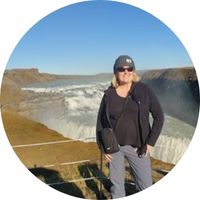
Andrea Godfrey
Head of Regent
Whether you're visiting for the warm, summer atmosphere or craving the cosy winter feeling, I've found that Reykjavik city breaks offer something special year-round. If you want something truly unique, there is arguably nowhere as unusual as Reykjavik, particularly within just a three-hour flying time of the UK. With this in mind, I set off on an unforgettable trip to the diminutive Icelandic capital for a city break - a gateway to exploring some of Iceland’s natural wonders. With its compact city centre, many attractions are within walking distance and a short drive away, while a Reykjavik travel guide can help you explore nearby wonders. Book a Reykjavik holiday package for a seamless, magical adventure.
Best Time to Visit Reykjavik
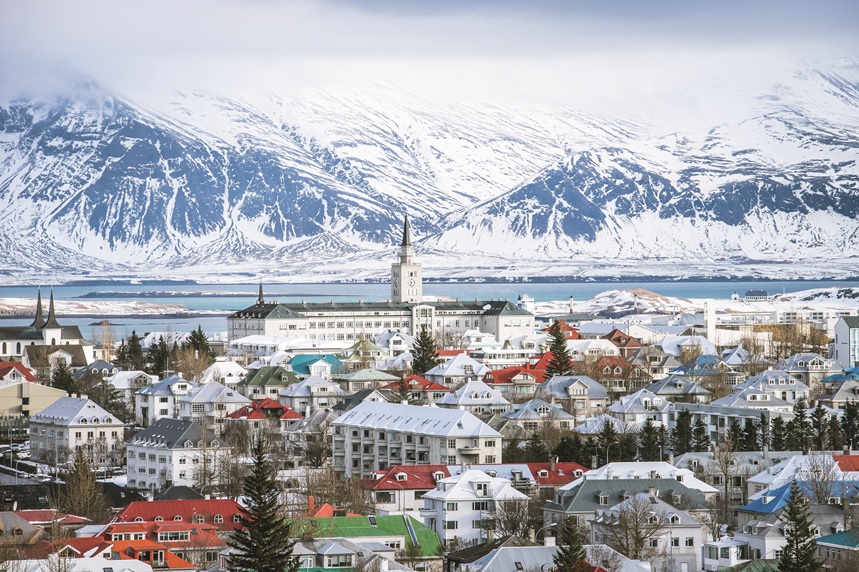 Reykjavik City under Snow
Reykjavik City under Snow
The best time to go to Reykjavik depends on the adventure you're seeking. After my many visits, I’ve discovered that different seasons bring an entirely new experience in the city. From the cosy winter atmosphere, with hot springs and snow-capped mountains, to the lively summer months offering exciting adventures exploring Reykjavik and its beautiful architecture under the midnight sun, each season offers something special. Be sure to consider the Reykjavik weather, which can greatly influence the activities and experiences you enjoy during your visit.
Winter
 Reykjavik Snowy Street
Reykjavik Snowy Street
From November to February, Reykjavik offers a truly magical experience. During this time, the pastel-coloured houses and striking buildings like the Hallgrímskirkja church are covered by a beautiful coat of frost, and the far-off Mount Esja is veiled in a fresh blanket of snow.
As the biting chill of winter settles over Reykjavik, there’s no shortage of indoor activities to enjoy. Reykjavik’s museums have really levelled up over the years, offering unique experiences like the thrilling FlyOver Iceland simulation that soars you over the country’s most breathtaking landscapes, or the dramatic Lava Show, which brings the raw power of Iceland’s volcanoes to life. Plus, for those who celebrate it, winter brings a festive atmosphere with unique events like Christmas markets, Icelandic New Year celebrations, and the Winter Lights Festival in Reykjavik.
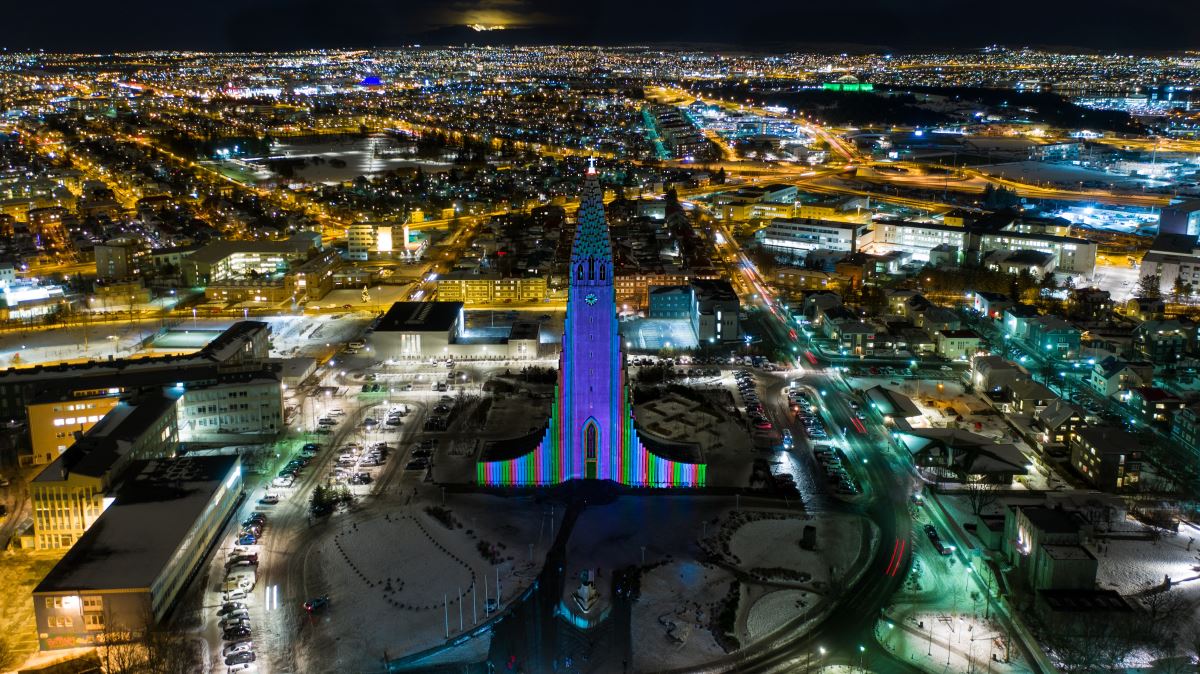 Winter Lights Festival in Reykjavik
Winter Lights Festival in Reykjavik
Don't miss the Kolaportid flea market, where you can pick up Icelandic wool jumpers, and browse second-hand bric or brac. During my last visit, I came across a beautiful, original painting of the Icelandic landscape.
Winter activities outside of Reykjavik
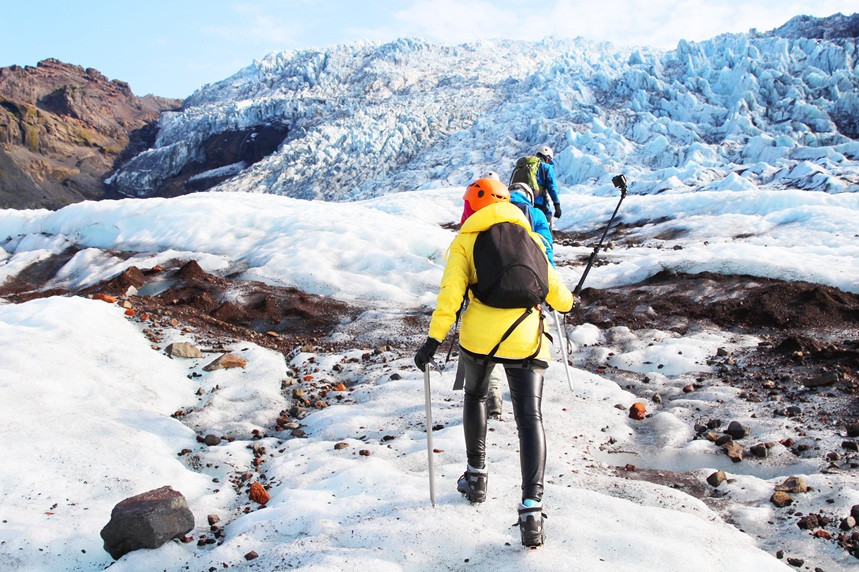 Glacier Hiking in Iceland
Glacier Hiking in Iceland
For those who crave adventure, winter in Iceland offers fantastic opportunities for snowshoeing, snowmobiling, and cross-country skiing. Be sure to venture outside the city to explore the South Coast or traverse the Golden Circle route, where you'll witness the landscapes transform into a magical winter wonderland. Snow-covered volcanoes, glaciers, and frozen waterfalls provide a stunning backdrop for photography and exploration.
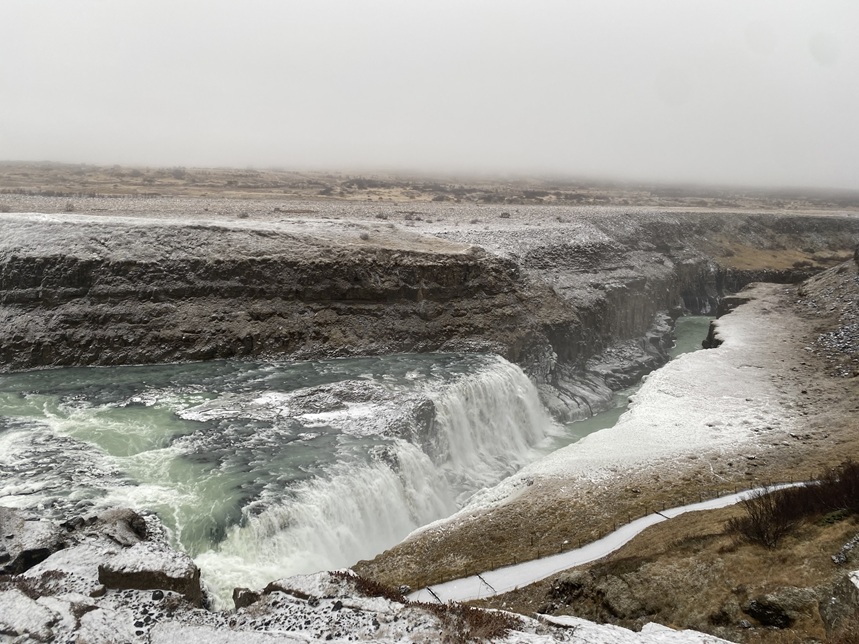 Gullfoss Falls
Gullfoss Falls
Why not combine a winter stay in Reykjavik with an adventure along the South Coast, soaking up the dramatic mountains, visiting intriguing ice caves and walking along the volcanic black sand beaches? Or perhaps venturing out of the city on a fly-drive adventure to see the Golden Circle attractions frosted over in picturesque sheets of ice and snow? Take a look through some of our favourite tours that take to you from the cosy capital city to the snowy wilderness, ideal for winter activities:
Top tip:
While the cold can be biting, with temperatures often below freezing, I recommend layering up with warm, waterproof clothing that ensures you can fully enjoy winter activities like exploring glaciers or soaking in hot springs.
Summer
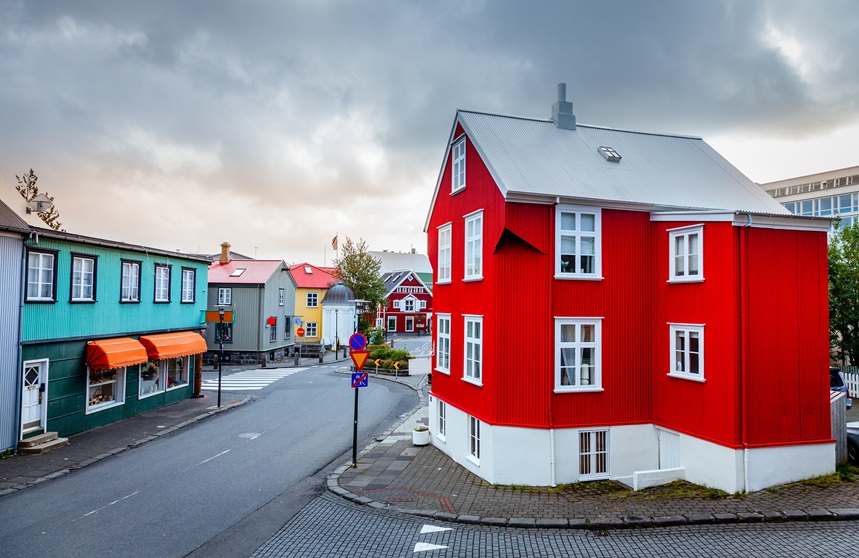 Reykjavik Under the Midnight Sun
Reykjavik Under the Midnight Sun
Between the summer months of June and August, you can enjoy exploring the beauty of Reykjavik under endless daylight and comfortable weather - perfect for those eager to explore its vibrant culture and streets lined with charming architecture.
For me, summer in Reykjavik is where the city truly comes alive. Under the midnight sun, terraces brim with laughter, music spills from open doors, and locals and visitors alike gather to enjoy a cold beer under a sky that never seems to darken. The evenings stretch endlessly, offering the perfect opportunity to hop between bars, sample Iceland’s craft beer scene, and soak up the lively atmosphere of places like Kaldi Bar or MicroBar. Whether you’re dining al fresco on fresh seafood or simply taking in the summer views over the harbour, Reykjavik’s summer evenings feel like a celebration of life itself!
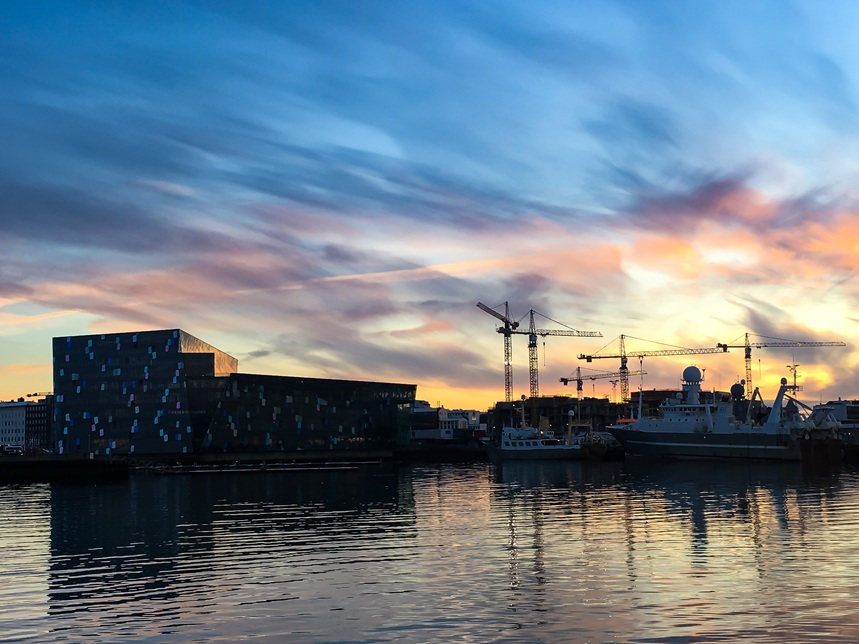 Reykjavik Shoreline
Reykjavik Shoreline
Plus, Reykjavik hosts lively festivals, concerts, and outdoor events during summer, including the Reykjavik Arts Festival and the Secret Solstice music festival.
Summer activities outside of Reykjavík
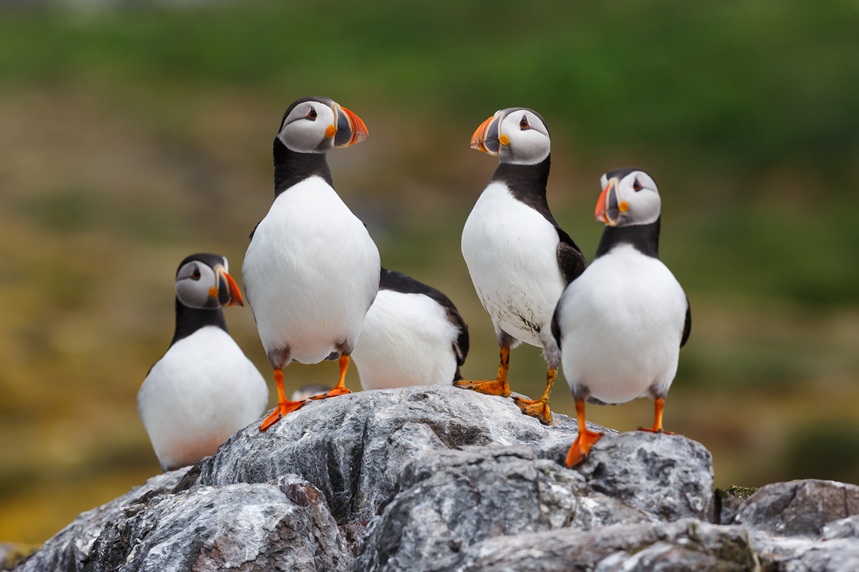 Puffins in Reykjavik
Puffins in Reykjavik
The landscapes in summertime are teeming with life. Escape the city and embark on thrilling adventures to spot the elusive creatures of Iceland from hiking the cliffs to glimpse the famous puffins to setting sail from the harbour to see the humpback and minke whales. Enjoy it all under 24 hours of daylight, with the midnight sun lighting up the city and picturesque wilderness.
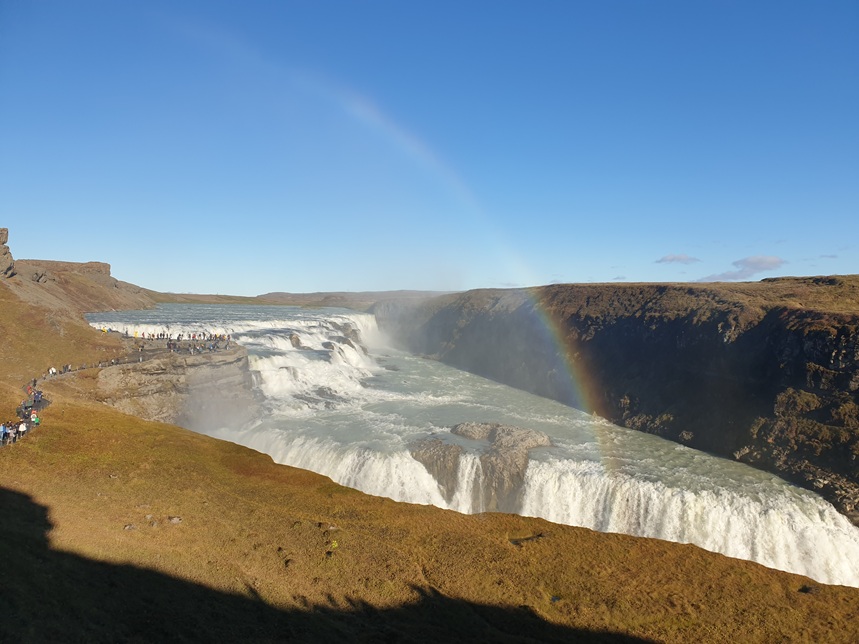 Gullfoss Waterfall with a Rainbow in Summer
Gullfoss Waterfall with a Rainbow in Summer
Our portfolio caters to those who want to experience Reykjavik in summertime, but also want to venture a bit further to unearth the rolling green hills, plunging waterfalls and soothing geothermal pools of Iceland. Discover some of our top summer tours, where you get to experience the best of Iceland alongside a stay in the capital:
Top tip:
With temperatures around 10-15°C, you’ll need a mix of light layers and warm gear for the occasional chill. The long days offer more time for unforgettable experiences, like hiking volcanic trails or visiting majestic waterfalls.
-
Discover the 10 best things to do in Iceland in the summer here.
Best Things to Do in Reykjavik
Wondering what to do in Reykjavik? From world-class museums and iconic landmarks to outdoor activities like whale watching and hiking, you'll never run out of exciting options at any time of the year. The best things to do in Reykjavik cater to every type of traveller, ensuring that your visit is packed with unforgettable experiences - all of them perfect for day trips. Here's a list of some of the most exciting things that I love to do in and around Reykjavík:
Whale Watching Adventure from Reykjavik
.jpg) Whale watching from Reykjavik
Whale watching from Reykjavik
Embark on an unforgettable whale-watching journey from Reykjavik, where the waters of Faxaflói Bay teem with marine life. Get up close to majestic humpback whales as they breach the surface, and spot minke whales, orcas, and even the mighty blue whale.
As you sail from Reykjavik’s bustling harbour, enjoy panoramic views of the city and the surrounding mountains, creating the perfect backdrop for this awe-inspiring experience. Whether you're a seasoned whale watcher or a first timer, this adventure offers a once-in-a-lifetime opportunity to witness these magnificent creatures in their natural habitat.
Discover the Wonders of Reykjavik City
 Hallgrímskirkja Church
Hallgrímskirkja Church
Explore Reykjavik’s captivating blend of culture and architecture. Visit the stunning Hallgrímskirkja Church, towering over the city with its unique design and panoramic views. Admire the shimmering, modern beauty of the Harpa Concert Hall, and capture the striking Sun Voyager sculpture, symbolising Iceland’s Viking heritage.
Stroll along Laugavegur, Reykjavik’s lively shopping street, and relax by the serene Lake Tjörnin, where swans glide across the water. Dive into Iceland’s rich history at its world-class museums, and experience the thrilling FlyOver Iceland for an immersive, aerial adventure over the country’s landscapes. Reykjavik is a very small city, making it incredibly walkable. You can see most of its iconic attractions in just one or two days, or spread them out across three or four days, which I think is the perfect amount of time to explore its beauty.
Helicopter Adventure: Reykjavik to the Blue Lagoon
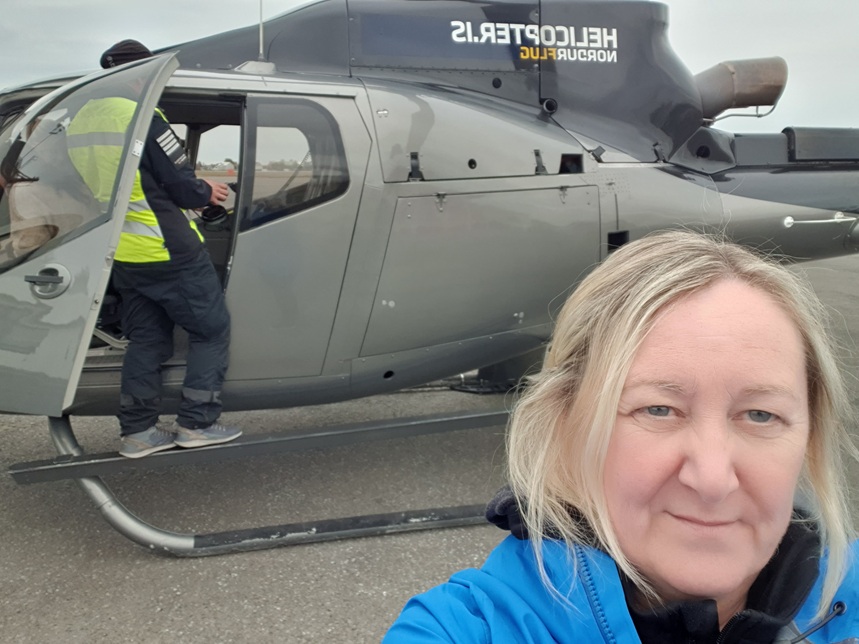 Andrea before a thrilling helicopter ride over Reykjavik
Andrea before a thrilling helicopter ride over Reykjavik
During my recent trip, I had the unrivalled opportunity to soar above Reykjavik on a thrilling helicopter ride, where I had a bird’s-eye view of the city’s vibrant streets and stunning coastline. As we headed towards the famous Blue Lagoon, we flew over dramatic volcanic landscapes and active eruption sites, where the earth pulsed with raw power.
Embark on this incredible adventure to witness the expansive lava fields and craters, glowing with fiery energy, before descending to the tranquil geothermal waters of the Blue Lagoon. This unforgettable journey combines the excitement of aerial exploration with the relaxation of Iceland’s most iconic spa, creating a once-in-a-lifetime adventure.
Iceland’s Must-See Routes: Natural Wonders Await
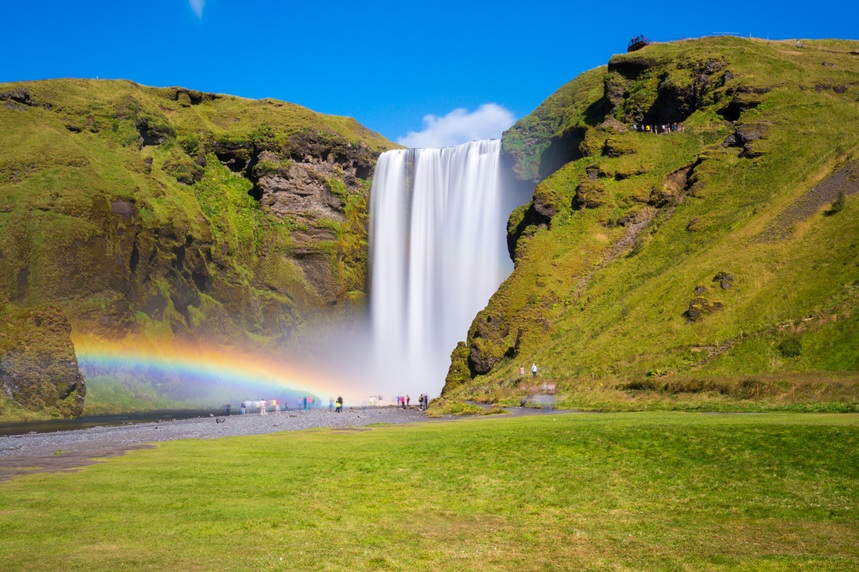 Seljalandsfoss waterfall
Seljalandsfoss waterfall
From Reykjavik, you can embark on some of Iceland’s iconic routes which lead to some of its top sights, where nature’s power unfolds in unforgettable ways. Tour guides take you to the Golden Circle, which showcases the explosive Geysir geothermal pools, the stunning Gullfoss waterfall, and the Þingvellir National Park.
The South Coast invites you to walk behind the dramatic Seljalandsfoss waterfall, explore the black sands of Reynisfjara, and marvel at the majestic Jökulsárlón Glacier Lagoon. The Diamond Circle takes you to Dettifoss, Europe’s most powerful waterfall, and the mystical Lake Mývatn, rich in geothermal activity. Don’t forget to experience these natural wonders on foot and create memories that will last forever!
-
Look out for our top five best waterfalls in Iceland on your explorations.
Chase the Northern Lights in Reykjavik
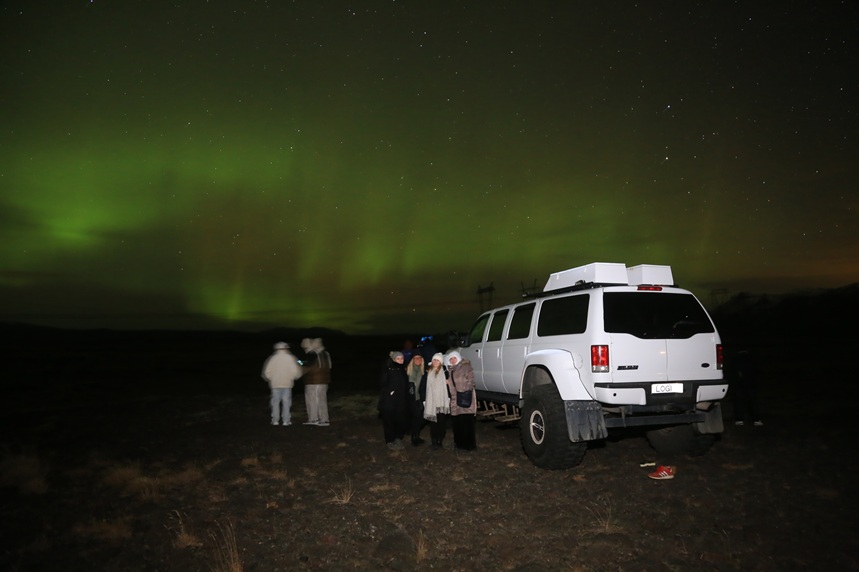 Superjeep Northern Lights Tour
Superjeep Northern Lights Tour
There’s nothing quite like experiencing the northern lights with aurora experts who take you to the best who can take you to the best spots to see them. While you're not likely to see them in the city where light pollution is high, there are some incredible places outside of the city where you can spot them. With our Superjeep Winter Adventure tour, you can head off road in a 4x4 to hunt for the phenomenon in the dark wilderness.
Where to Stay: Best Reykjavik Hotels
During my September adventure, I stayed at The Reykjavik EDITION, and it’s safe to say that this hotel has already brought a new level of five-star luxury to the city. This retreat lagoon, a blend of signature EDITION style with Icelandic touches, is situated in a prime harbour-side location, offering sweeping views of Mt. Esja and the city’s cultural hub, the Harpa Concert Hall. Discover my experience of this fabulous hotel below:
The Reykjavik EDITION
Setting the Scene
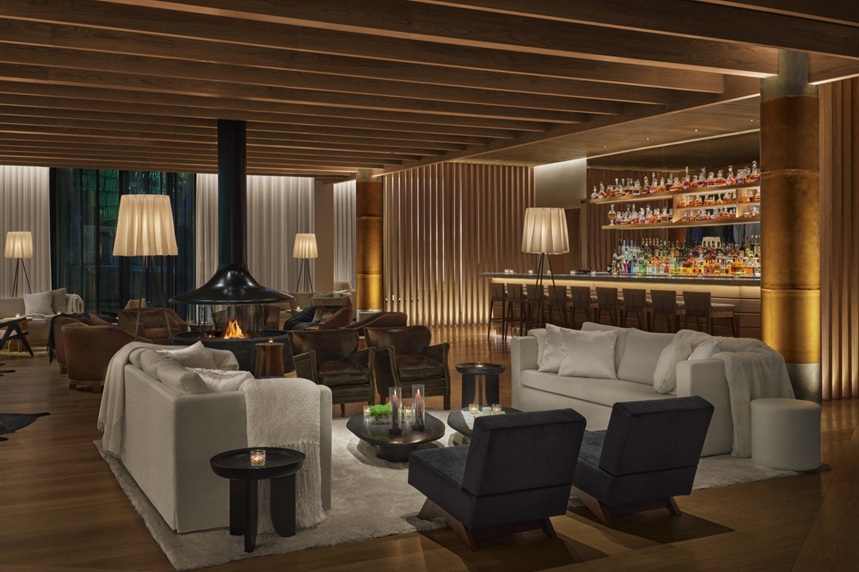 The Reykjavik EDITION
The Reykjavik EDITION
From the moment you enter, The Reykjavik EDITION sets itself apart with a unique design blending Iceland's rugged beauty with modern elegance. The lobby features an imposing lava rock "totem" draped in faux fur, while a digital display of the northern lights adds a touch of magic. It’s a lively space, with locals enjoying drinks before nearby concerts and adventurers sharing stories over coffee.
The Rooms: Modern Comfort Meets Icelandic Hygge
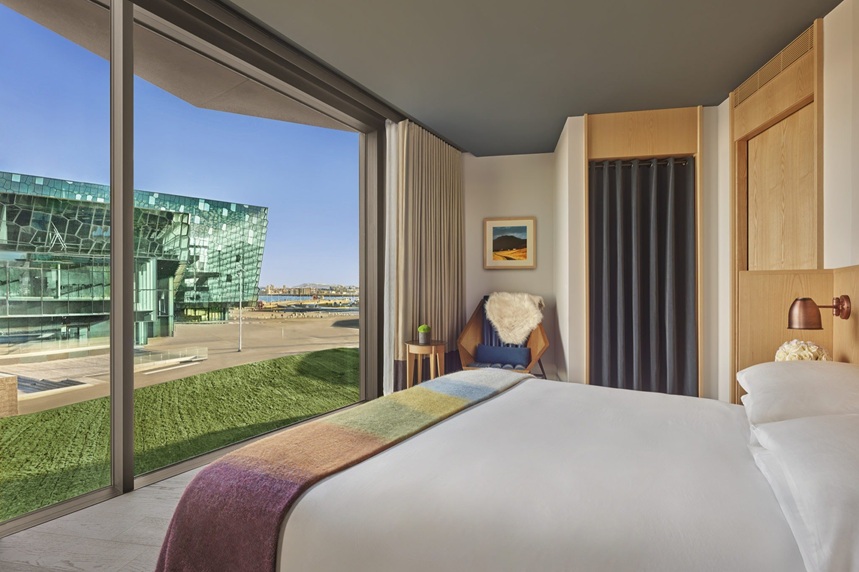 The Reykjavik EDITION Bedroom and View
The Reykjavik EDITION Bedroom and View
The rooms offer a blend of luxury and Icelandic warmth. Floor-to-ceiling windows frame views of the harbour or city, while minimalist décor creates a cosy atmosphere with custom Italian furniture, faux fur rugs, and wool throws from local brand Ístex. I especially enjoyed the Icelandic touches, like knitted throws and the turndown carafe, encouraging you to drink pure Icelandic water straight from the tap. The Edition’s signature scent—Black Tea—fills the air, and you can even purchase candles to take the experience home.
A Foodie’s Haven
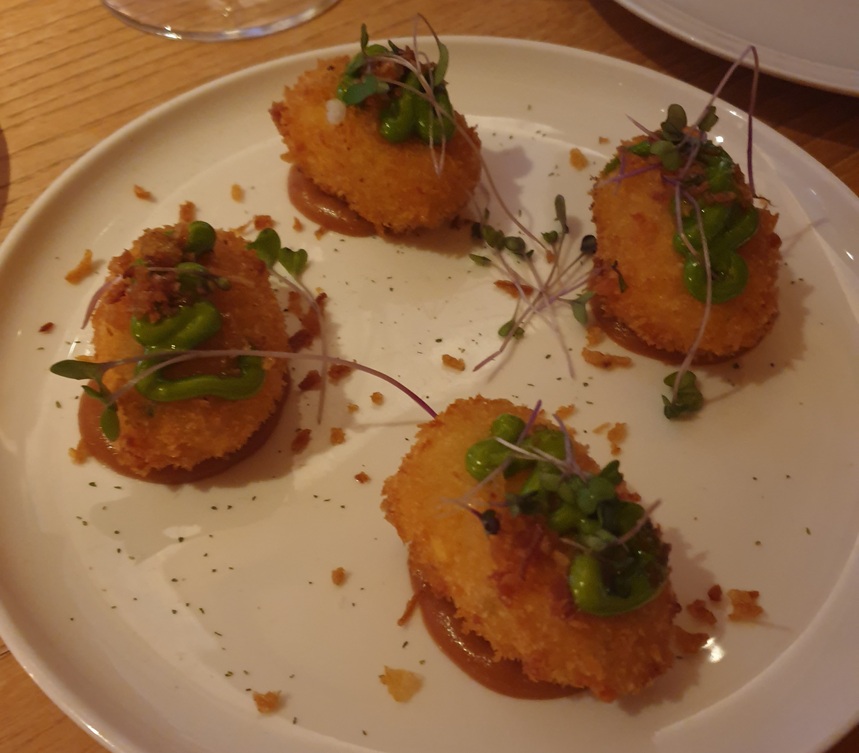 The Reykjavik EDITION Restaurant Food
The Reykjavik EDITION Restaurant Food
Tides, the hotel’s restaurant, led by Michelin-star chef Gunnar Karl Gíslason, showcases modern Icelandic cuisine, including Arctic char, cod, and lamb. Breakfast was a memorable experience, with a humorous mix-up over egg terminology. I also enjoyed stunning sunset views while sipping drinks at the Sky Bar.
A Spa Experience Like No Other
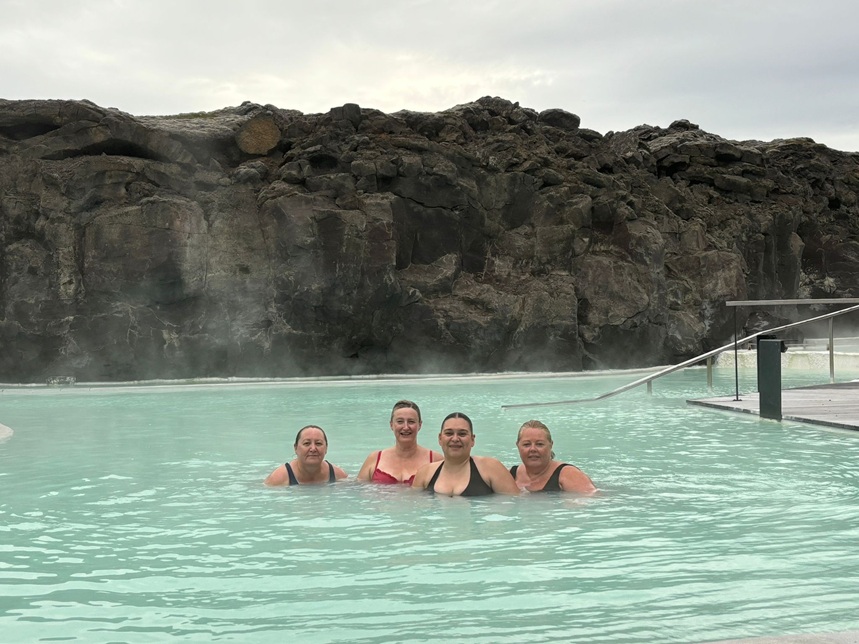 The Reykjavik EDITION Retreat Lagoon
The Reykjavik EDITION Retreat Lagoon
The retreat lagoon boasts a communal hammam, which provides a more intimate experience than Iceland’s famous lagoons, with a social spa concept that includes food and drink service between treatments.
Torfhus Retreat
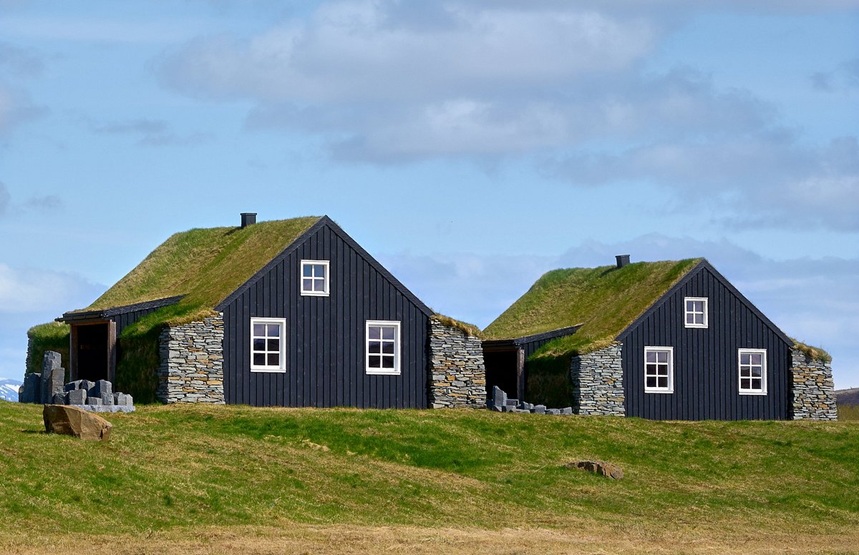 Torfhús Retreat
Torfhús Retreat
I had an extraordinary experience staying at the Torfhús (or “Turfhouse”) Retreat, located around an hour from Reykjavik. This summer, Torfhús Retreat unveiled two exclusive four-bed, five-bath villas designed for discerning guests seeking privacy and luxury. Located a short distance from the hotel, these villas offer a sanctuary with in-villa dining, private saunas, plunge pools, and heated basalt pools. A helicopter landing pad ensures seamless access to this high-end retreat.
Combining traditional Icelandic design with modern amenities, these villas offer unparalleled comfort and tranquillity, and it was perfect for when I wanted to escape and experience the stunning landscape in privacy. It’s the ultimate blend of serenity, luxury, and Icelandic charm.
Top Places to Eat in Reykjavik
Reykjavik is experiencing a culinary renaissance that food lovers will appreciate. The emergence of food courts, such as Hlemmur Mathöll, Pósthús Food Hall & Bar, and Grandi Mathöll, has created lively environments where you can enjoy a wide range of options, from fresh Icelandic seafood to international cuisines like ramen and tacos. This setting offers an excellent opportunity to sample various dishes without the commitment of a formal sit-down meal.
 Kaffi Loki
Kaffi Loki
For the truly adventurous foodie, there's a handful of restaurants that sell the country's most well-known delicacy: fermented shark (or kæstur hákarl). Kaffi Loki is renowned for selling this unusual dish, which you can dine on with an unrivalled view of the iconic Hallgrímskirkja Church.
 Soup Bread Bowl, Reykjavik
Soup Bread Bowl, Reykjavik
If you're looking for something more unusual but totally delicious after a long day of exploring, head to one of the restaurants in the city that sell the Icelandic lamb soup served in a bread bowl, paired perfectly with the local Viking beer.
- Why not embark on an Iceland food adventure with us?
During my last visit, I travelled out to Selfoss, where I dined at Friðheimar - Iceland's famous tomato farm. The café is often fully booked, so be sure to reserve in advance. However, their newly opened wine room offers a fantastic alternative in the evenings. Here, you can enjoy a selection of incredible food, cocktails, and, of course, their signature tomato beer. With its cool Icelandic ambiance, it’s one of my favourite spots for an unforgettable evening meal, surrounded by the unique charm of Friðheimar.
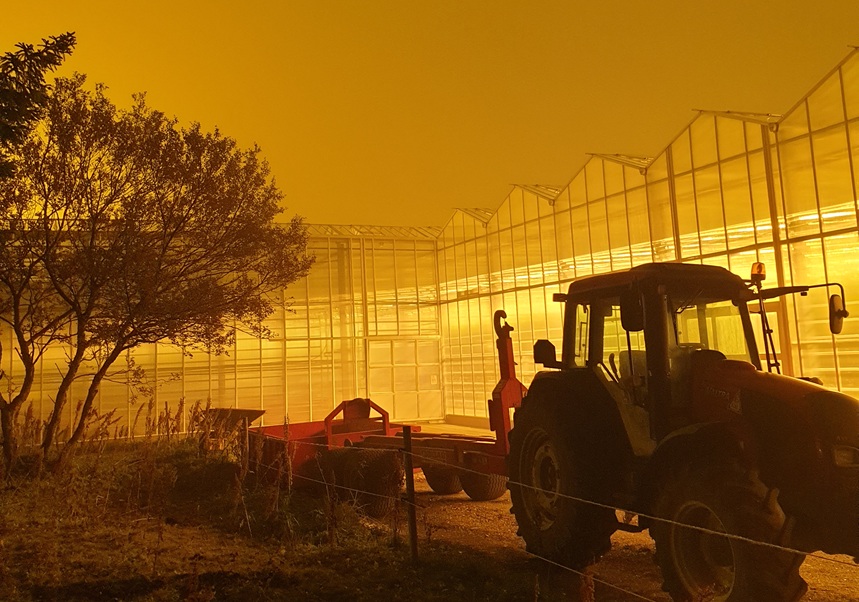 Friðheimar, Selfoss
Friðheimar, Selfoss
-
Looking for an atmospheric bar or some more information about the nightlife in Iceland? See the top five places for a drink in Iceland's capital here.
My Reykjavik city break was an unforgettable experience filled with unique adventures and breathtaking sights. Whether you're chasing the northern lights, soaking in a geothermal pool, or discovering the city's vibrant culture, Reykjavik offers something for every traveller. I'm already planning my next trip!
Looking to plan your own trip? I recommend having a look into our wide range of options. From fly-drives and cruises to road trips and small group tours, I'm positive that we have the perfect Reykjavík escape for you.
-
Read here for your guide to the best Iceland road trips.
Reykjavik City Breaks with Regent Holidays
Are you inspired by this comprehensive Reykjavik city break guide? Start planning your adventure to this incredible country with our knowledgeable Travel Specialists today. After 50 years of experience in curating meticulous tours to Iceland, the Regent experts are ready to craft your perfect Icelandic getaway, ensuring every detail exceeds your expectations.
Still not convinced? Read about the top places to visit and things to do in Iceland: guide for first-timer's.